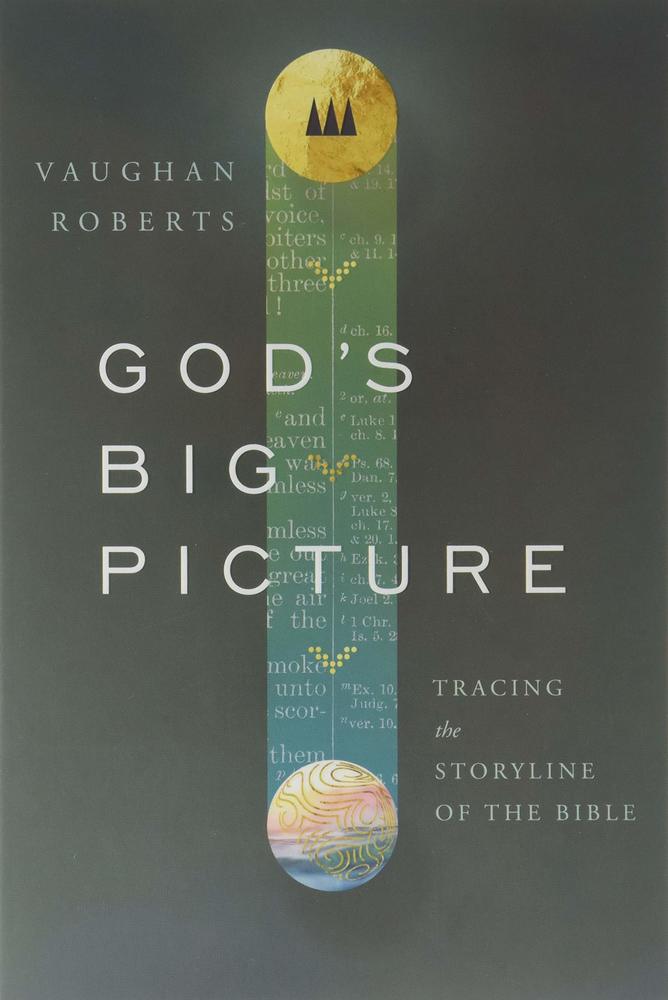Spiritual Disciplines: The Big Picture of the Bible
Coming to the Scriptures without background knowledge has some advantages because you might be better able to read the scriptures for what they say without preconceived ideas. However, without understanding the larger storyline of the passage/s you are reading, the Bible can quickly become confusing. In some ways it is like looking at one piece of a 1000-piece puzzle and trying to make specific claims about the puzzle from that one piece.
When it comes to better understanding the Bible, it is helpful to have a good understanding of Genesis 1-3 as you read the rest of the Bible. Not so much the ins-and-outs of what was created or the timeline of these events, but rather seeing God as the Creator of a good world and mankind being created in his image. This is followed by the consequences of man rebelling against God’s instruction. Man’s rebellion leads to death, pain, and suffering. Keeping an eye on these overarching realities in Genesis 1-3 can help us see God’s desire for close relationship with man and man’s desire to rule independent of God rather than live under God’s authority.
The dynamic of God pursing a rebellious people is present through the entire scriptures. The imagery and sacrificial system in the Old Testament points to man’s need for cleansing from sin and needing rescued from evil. Both the evil within, “the flesh”, and the evil from outside, “the tempter” and those under his reign. Amid this bleak picture, there is anticipation for a Rescuer who fulfills the promise first mentioned in Genesis 3:15 and runs through the entire Bible. Then Jesus enters the scene in the New Testament as the promised Messiah. Jesus offers life and freedom through recognizing him as the promised Messiah and following him.
It is helpful to shift our view of the Bible as a collection of stories to one connected story starting in Genesis and running through Revelations all pointing to Jesus. Seeing the Bible as one continuous story leads to asking different questions as you read a passage. Questions shift from “how does this apply to me?” or “what do I do with this?” to first trying to understand the passage. Seeking to first understand the passage allows for considering how to live out its teachings. Trying to understand the passage shifts questions to “how does this fit into the storyline of the Bible?” or “is the author drawing from other passages and if so why?” For example, in Matthew we are told Jesus went into the dessert to be tested for 40 days. This account has more layers to consider when thought of as more than an isolated event. When thought of as part of an ongoing story it echoes the Israelites wandering the desert for 40 years and how they walked through testing compared to how Jesus walks through his testing. This is just one example of how seeing the Bible as one continuous story brings the wonder and beauty of the Scriptures to life. The Old Testament points to the promised Messiah and the New Testament demonstrates how Jesus was the promised Messiah and what it means to live as his disciple.
Discussion Questions
- How does thinking of the Bible as one connected story affect the way you approach the Scriptures?
- What are the benefits/dangers of trying to keep the overarching themes of scripture in mind as you read a specific passage of Scripture?
- What are major themes or ideas that run throughout the Bible?
- What parts of the Bible or Bible storyline are difficult for you to understand?
- What could you do to grow in your understanding of these items?
- Scriptures to Consider: Genesis 1:26-31, Genesis 3:6, Genesis 3:21, Luke 24:27, Isaiah 61:1-3 and Luke 4:16-21, Genesis 3:14-15 and 1 Corinthians 15:1-19, Romans 5:14-21
To view the complete PDF, click here.
For Further Information:
 God’s Big Picture: Tracing the Storyline of the Bible
God’s Big Picture: Tracing the Storyline of the Bible ![]()
Author: Vaughan Roberts
In this excellent overview, Vaughan Roberts gives you the big picture–showing how the different parts of the Bible fit together under the theme of the kingdom of God. He provides both the encouragement and the tools to help you read the Bible with confidence and understanding. And he points you to the Bible’s supreme subject, Jesus Christ, and the salvation God offers through him.
 30 Days to Understanding the Bible
30 Days to Understanding the Bible ![]()
Author: Max Anders
This 336-page book introduces you to key Bible characters, places, and events in chronological order so that you can “think your way through” the entire Word of God. Through interesting, memory-enhancing exercises, Understand the Bible in 30 Days acquaints readers with the core teachings of Scripture in just 15 minutes a day!
 The Jesus Story Book Bible: Every Story Whispers His Name
The Jesus Story Book Bible: Every Story Whispers His Name ![]()
Author: Sally Lloyd-Jones
This 352-page book, tells the Story beneath all the stories in the Bible, pointing to Jesus as our Savior. From the Old Testament through the New Testament, as the Story unfolds, children will clearly see that Jesus is at the center of God’s great story of salvation—and at the center of their story too.





Comments
Leave a Comment